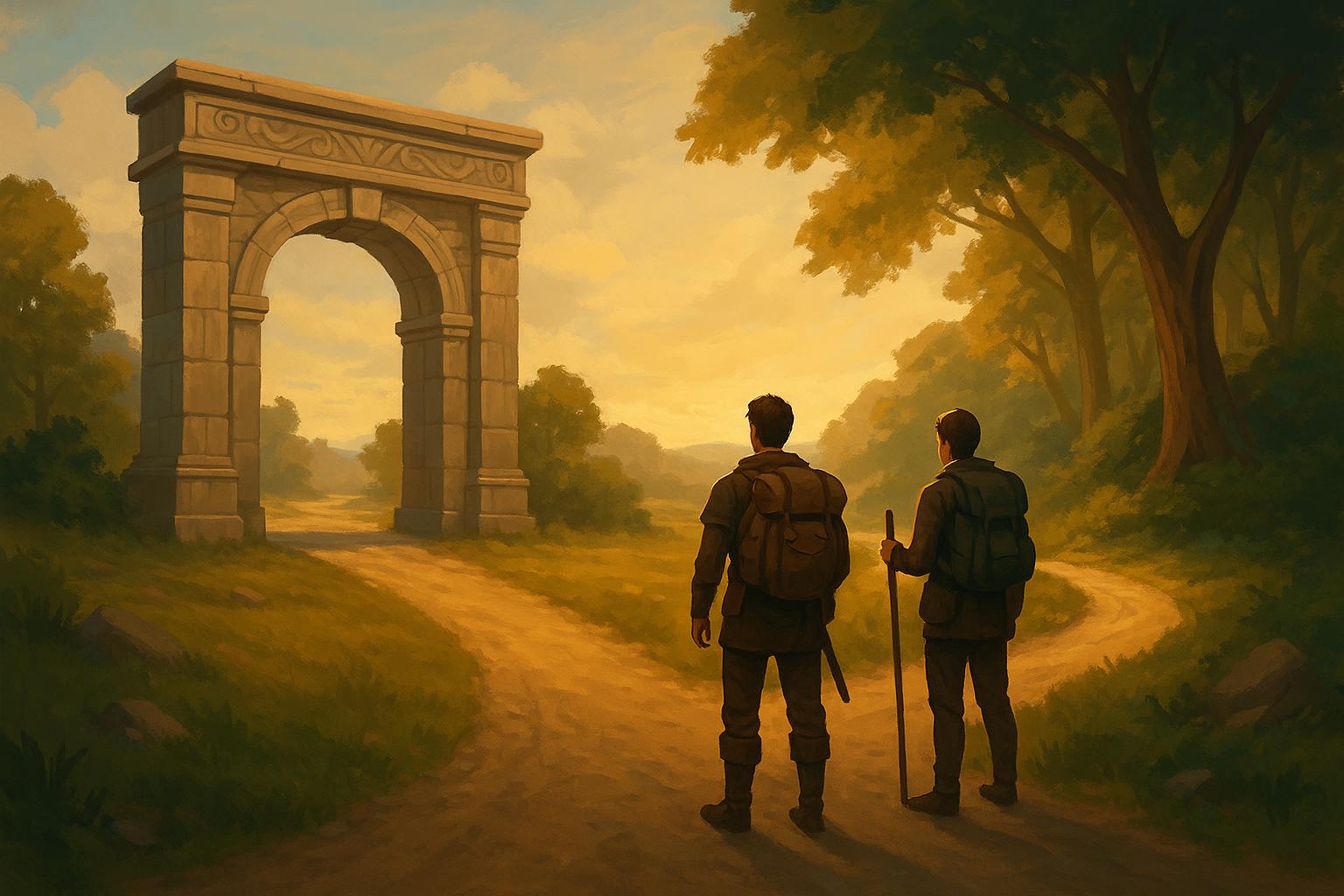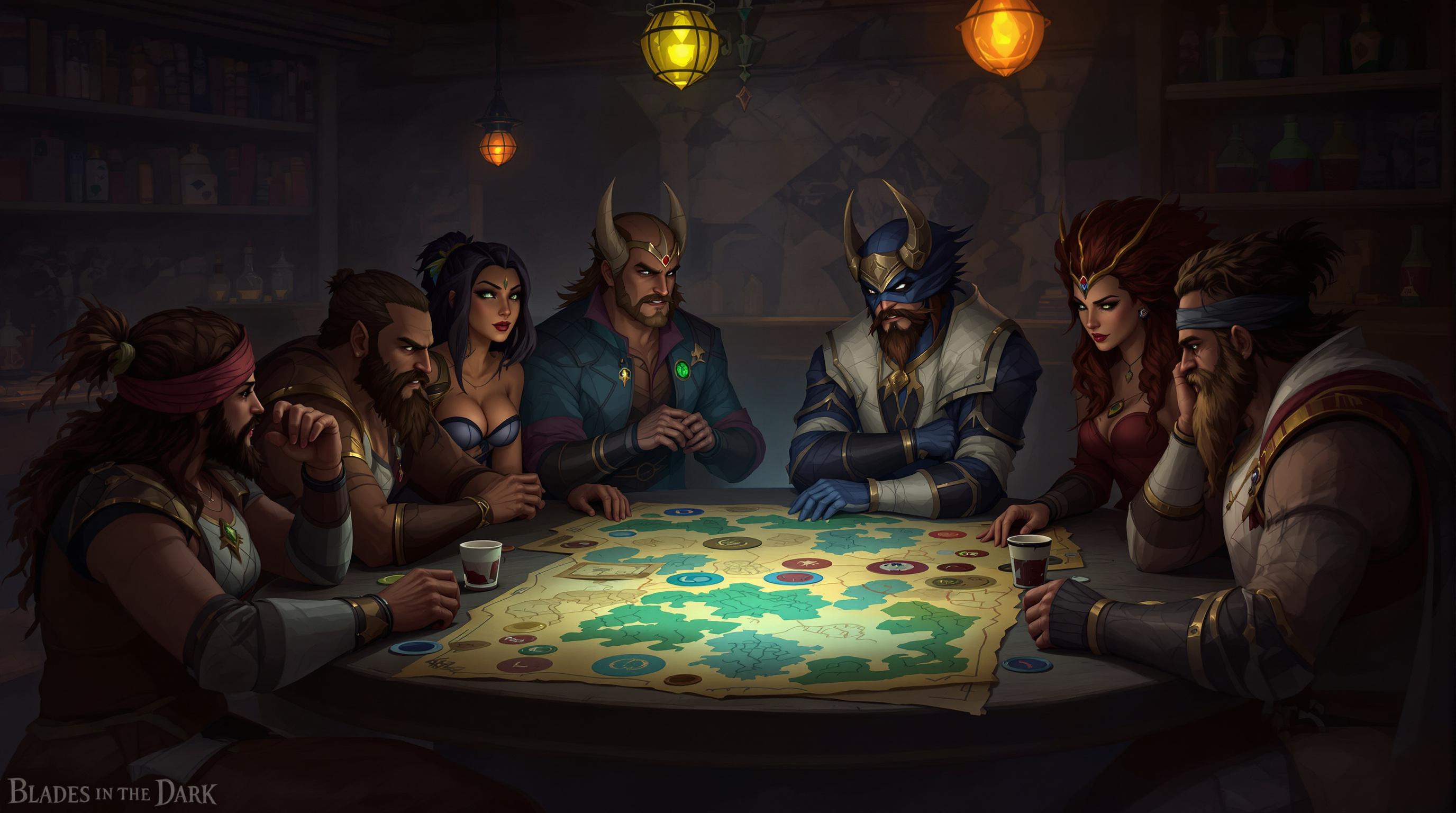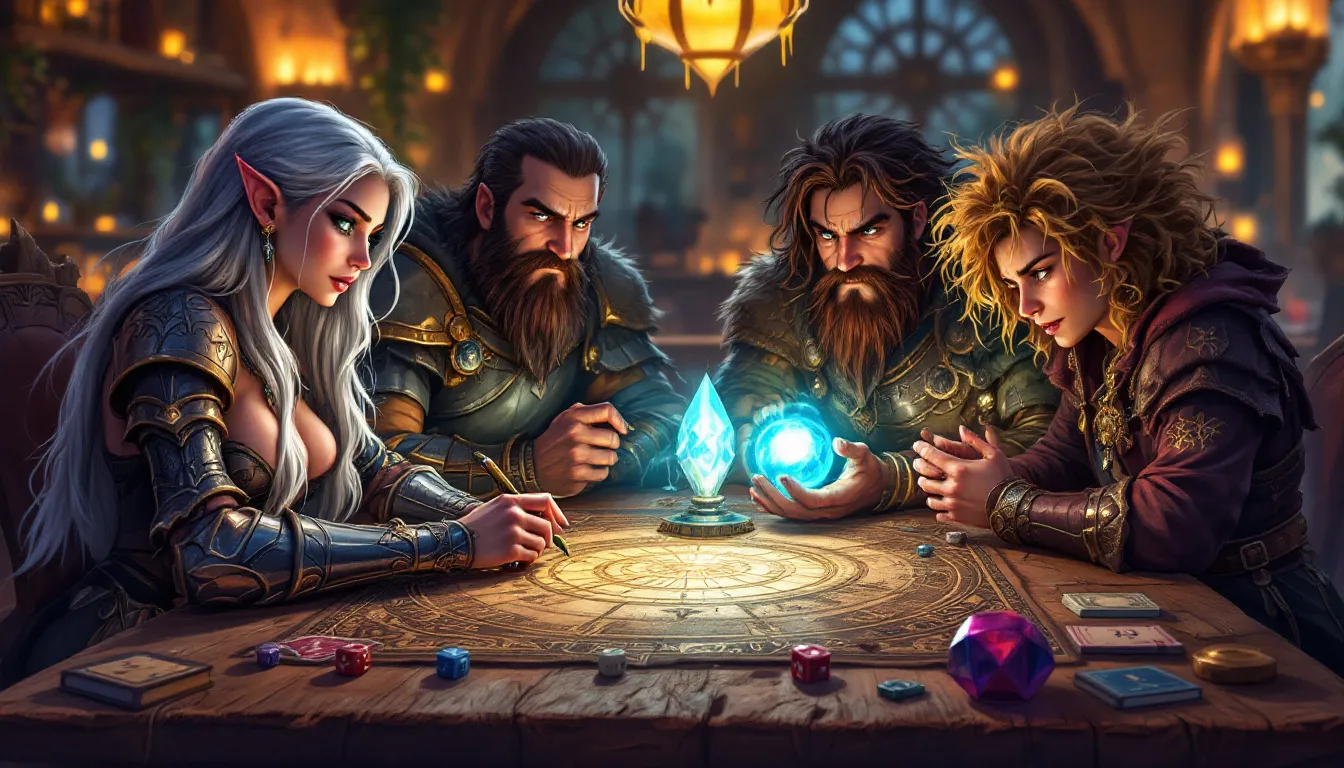Survival TTRPGs push players into harsh, unforgiving scenarios where resource management, tough decisions, and teamwork are key. These games stand out for their high-stakes tension and immersive storytelling. Here's a quick rundown of five standout systems:
- Mothership: A sci-fi horror game with stress and panic mechanics, perfect for space survival and psychological horror fans.
- Ten Candles: A tragic, candlelit game where players craft their characters' final moments in a world of inevitable doom.
- The Long Dark (Tabletop): Based on the video game, this game focuses on surviving extreme cold and resource scarcity.
- Outward (Tabletop): A grounded fantasy survival game where players manage resources and face the consequences of their choices.
- Dread: A horror game using a Jenga tower instead of dice, creating intense, physical tension in every action.
Each game offers a unique blend of mechanics and storytelling, catering to different player preferences. Whether you want sci-fi horror, emotional tragedy, or gritty realism, there's a survival TTRPG for every group.
Quick Comparison
| Game | Setting | Mechanics Focus | Play Style | Recommended For |
|---|---|---|---|---|
| Mothership | Sci-fi horror | Stress and panic | Tense, immersive | Fans of psychological horror |
| Ten Candles | Apocalyptic tragedy | Candle-based tension | Emotional, narrative | One-shots with deep storytelling |
| The Long Dark | Frozen wilderness | Resource management | Realistic survival | Long-term survival campaigns |
| Outward | Fantasy survival | Backpack, consequences | Strategic, gritty | Players seeking grounded fantasy |
| Dread | Horror scenarios | Jenga tower tension | High-pressure, short | New players or horror enthusiasts |
Choose a game that suits your group's style and dive into the challenges of survival!
#TTRPG Review - Broken Shores - Brutal Survival in a Drowned World
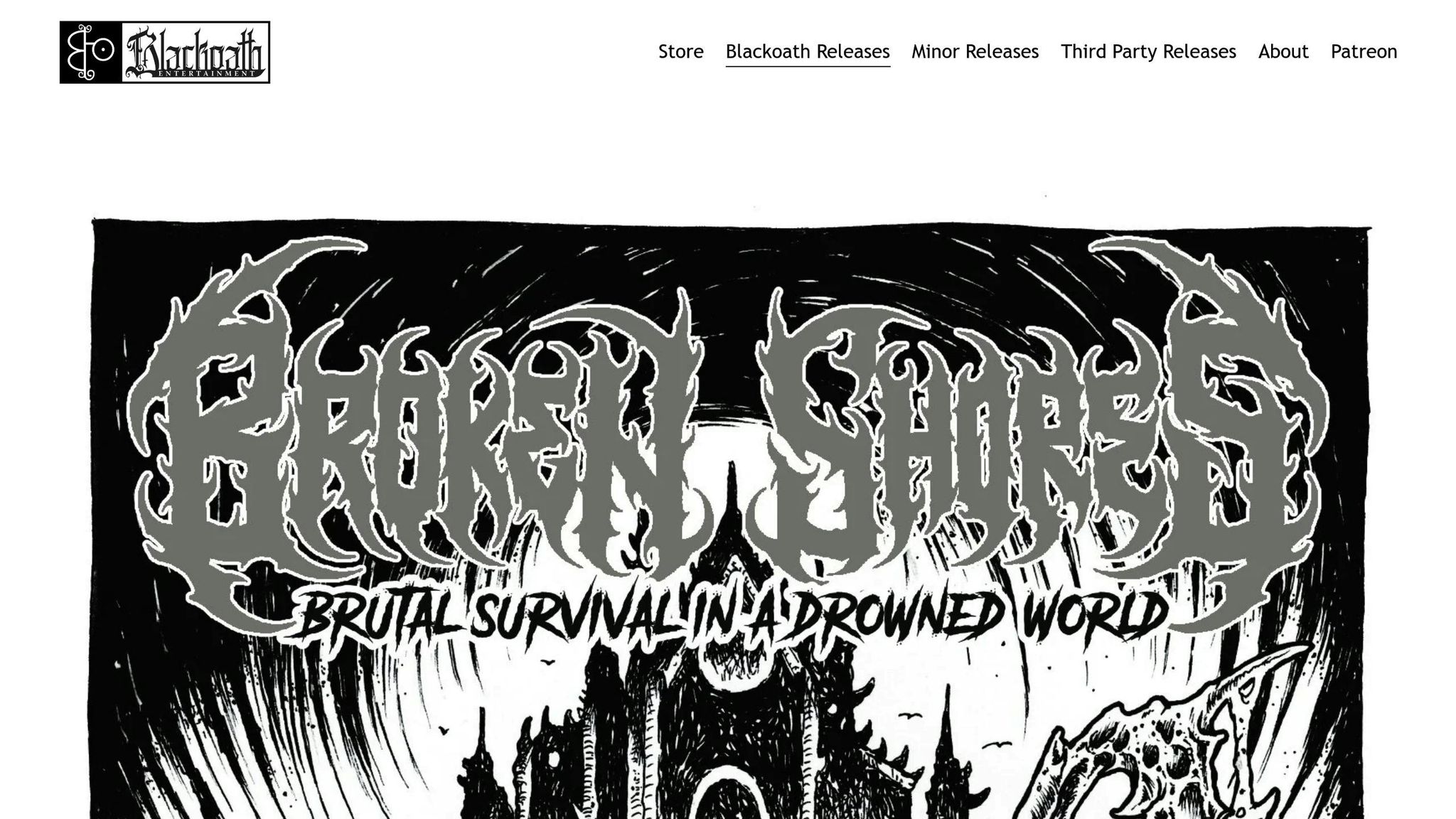
1. Mothership
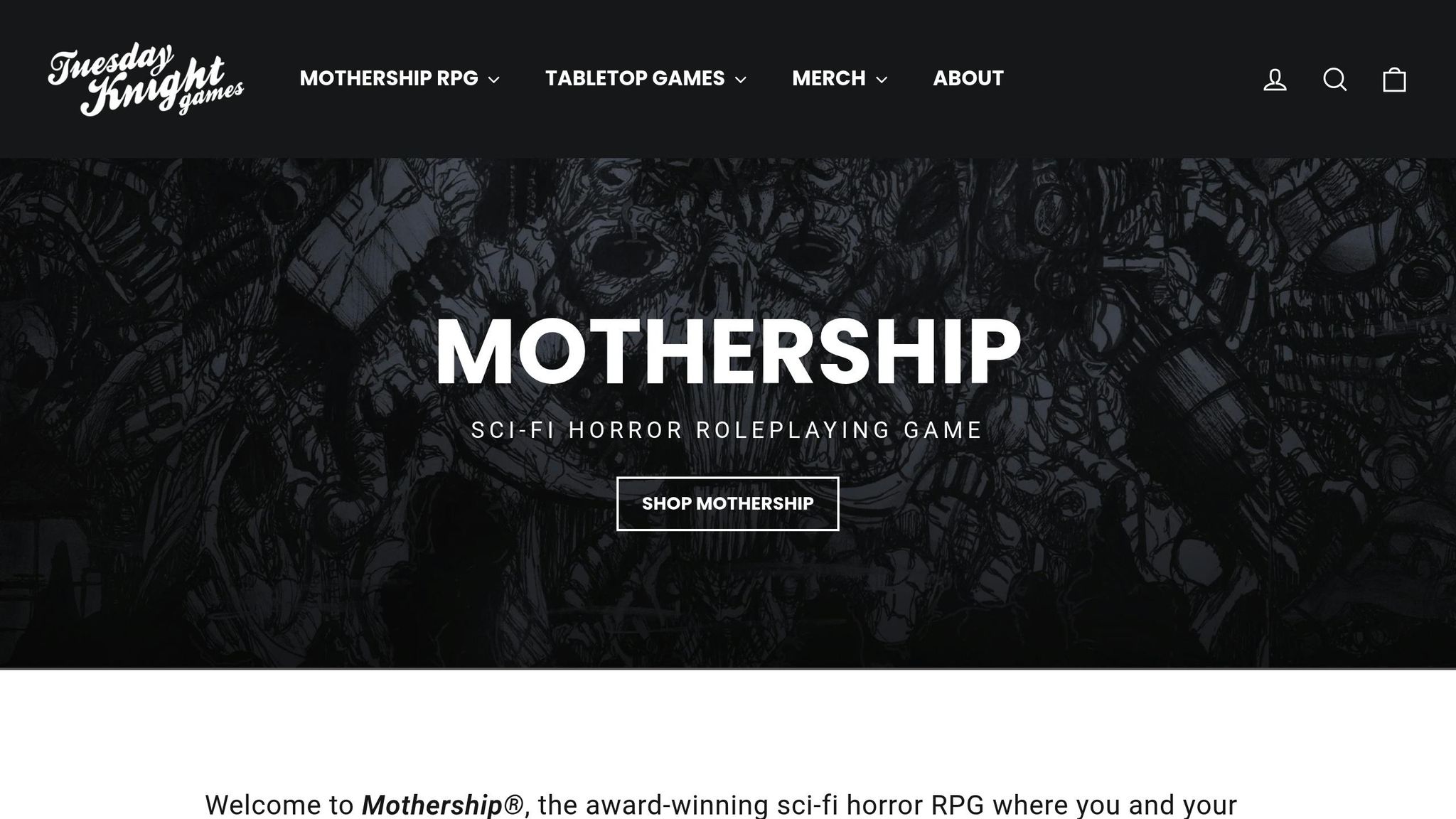
Mothership is a sci-fi horror survival TTRPG that blends the terror of isolation with unforgiving survival mechanics. Players step into the boots of everyday space workers - miners, truckers, scientists, and marines - thrust into horrifying encounters in the vast emptiness of space.
Survival Mechanics
At the heart of the game lies its Stress and Panic system, which creates a spiraling sense of dread. As characters face terrifying situations, they accumulate Stress points. When Stress reaches critical levels, players roll on the Panic table, triggering unpredictable effects like freezing in fear or complete mental collapse.
Adding to the tension, resources like oxygen, food, ammunition, and medical supplies are scarce, forcing players to make tough, life-or-death choices. The Wounds and Trauma system ensures that injuries leave lasting marks. Healing isn’t a simple matter of resting; serious wounds demand immediate care and precious resources - both of which are often in short supply. These mechanics not only test players’ survival skills but also heighten the horror as the story unfolds.
Narrative Style
The game’s mechanics naturally build tension, weaving horror into every moment. Instead of relying on pre-written scripts, Mothership lets the Stress system drive the story. As characters buckle under pressure, their poor decisions lead to the kind of chaos and unpredictability that defines great horror.
Its streamlined rules prioritize immersion and roleplay. With only a handful of mechanics to learn, Game Masters can focus on crafting suspense without being bogged down by complex rulebooks. This simplicity keeps the pacing tight, making every encounter feel urgent.
Environmental storytelling is another standout feature. The game equips players with tools to create hauntingly detailed settings - derelict ships, abandoned space stations, or alien landscapes. These environments tell their own stories through decay and emptiness, hinting at past disasters while foreshadowing future dangers.
Player Experience
Mothership doesn’t just challenge players - it pulls them in emotionally. Losing a character feels significant because each one comes with unique skills and a personal story, rather than being a generic, replaceable figure.
Crisis situations push players to collaborate under intense pressure. Whether it’s fixing a failing life support system or fending off an alien threat, teamwork and resourcefulness are key. These moments of shared desperation often become the highlights of a campaign.
Character growth in Mothership feels earned. Instead of leveling up through combat, players improve by surviving harrowing situations and learning from their mistakes. This connection between player actions and character development makes progression feel deeply rewarding.
Accessibility
Despite its intense themes, Mothership is remarkably easy to pick up. The core mechanics are simple enough to explain in minutes, allowing new players to dive in quickly. Its straightforward percentile system - where success is determined by rolling under a skill value - keeps gameplay intuitive and accessible.
The Player Survival Guide is a handy resource, offering clear rules and quick character creation. This is especially important in a game where survival hangs by a thread.
For Game Masters, Mothership provides excellent scenario-building tools. Pre-written adventures offer solid starting points but leave room for customization, making it easy to tailor the experience. The modular design even allows GMs to adapt content from other sources or craft their own survival horror stories, keeping the game fresh and engaging.
2. Ten Candles
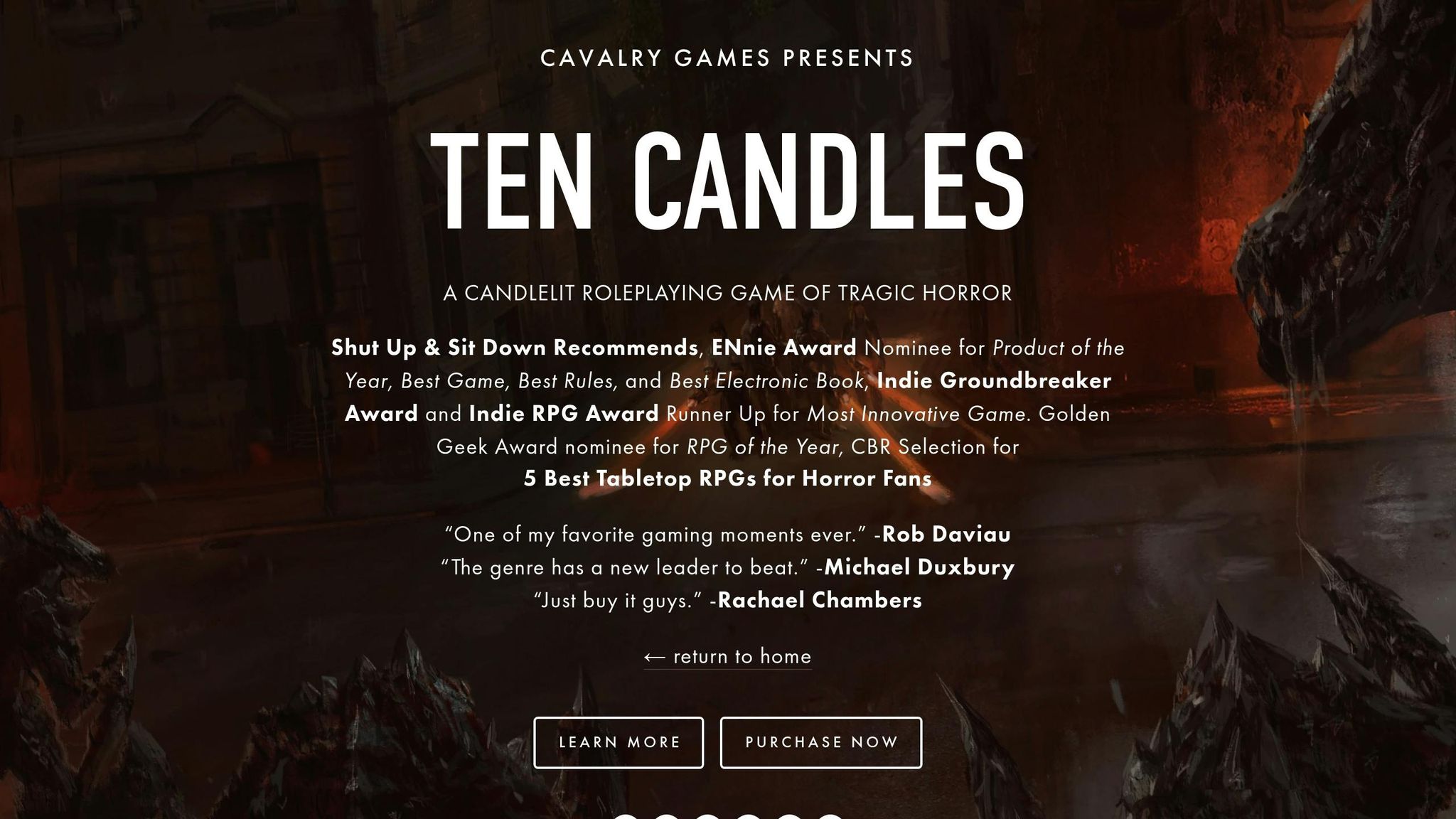
Ten Candles is a survival horror tabletop RPG (TTRPG) that plunges players into an atmosphere of inevitable doom using a simple yet powerful prop: real candles. From the moment the first candle is lit, players know that when the last one goes out, their story - and their characters' lives - will come to an end.
Survival Mechanics
At the heart of the game are the ten lit candles placed at the center of the table. Each candle represents the dwindling hope and time the characters have left. As the game progresses, failed dice rolls extinguish the candles one by one, gradually bringing the group closer to their inescapable fate.
This mechanic doesn't just heighten tension - it mirrors the narrative's descent from fleeting optimism to utter despair. Instead of tracking hit points or other traditional RPG stats, Ten Candles focuses on the emotional weight of loss. With every candle blown out, the stakes rise, and the characters face mounting challenges. The interplay of light and shadow isn't just for atmosphere; it’s a physical reminder of their shrinking chances, encouraging players to lean on one another as their characters struggle to hold onto hope.
Narrative Style
The storytelling in Ten Candles is built around the concept of collaborative tragedy. From the outset, players know their characters won't survive. The goal isn't to "win" but to create a powerful and poignant story about their final moments. The game provides a framework for apocalyptic scenarios, but the specifics are shaped by the players through shared storytelling.
Key narrative moments occur whenever a candle is extinguished. These moments allow players to describe critical events - acts of bravery, moments of despair, or fleeting triumphs - that define their characters' final hours. This structure turns mechanical failure into opportunities for emotional storytelling, making each loss of light a significant turning point. The inevitability of the characters' demise encourages players to focus on crafting meaningful, heroic moments rather than worrying about survival mechanics.
Player Experience
The physical presence of burning candles creates a sense of urgency and dread that few other games can replicate. As the room grows darker, players often feel a genuine sense of anxiety, which deepens their immersion in the story. The fading light serves as a constant reminder of the characters' inevitable end, amplifying the tension in ways abstract mechanics can't achieve.
Because the characters' fate is sealed from the start, players tend to invest deeply in their roles, prioritizing emotional storytelling over tactical gameplay. This focus on character-driven moments enriches the narrative, making each session a memorable experience. Sessions are intentionally short, typically lasting 3–4 hours, ensuring the story reaches a powerful and conclusive ending.
Accessibility
Despite its emotional depth, Ten Candles is refreshingly simple to set up. It uses a streamlined d6 system and a straightforward character creation process, allowing players to jump into the game quickly. The minimal setup - requiring only ten candles, matches, and some paper - keeps the focus squarely on the story and the atmosphere.
The game's guided structure, with clear pacing and narrative prompts, makes it an excellent choice for new Game Masters. However, due to its heavy themes and emotionally intense nature, it's important for players to discuss boundaries beforehand and ensure everyone feels comfortable with the experience.
Ten Candles offers a hauntingly beautiful take on survival horror, blending simple mechanics with deeply emotional storytelling. It's a game that lingers long after the final candle is extinguished.
3. The Long Dark (Tabletop Adaptation)
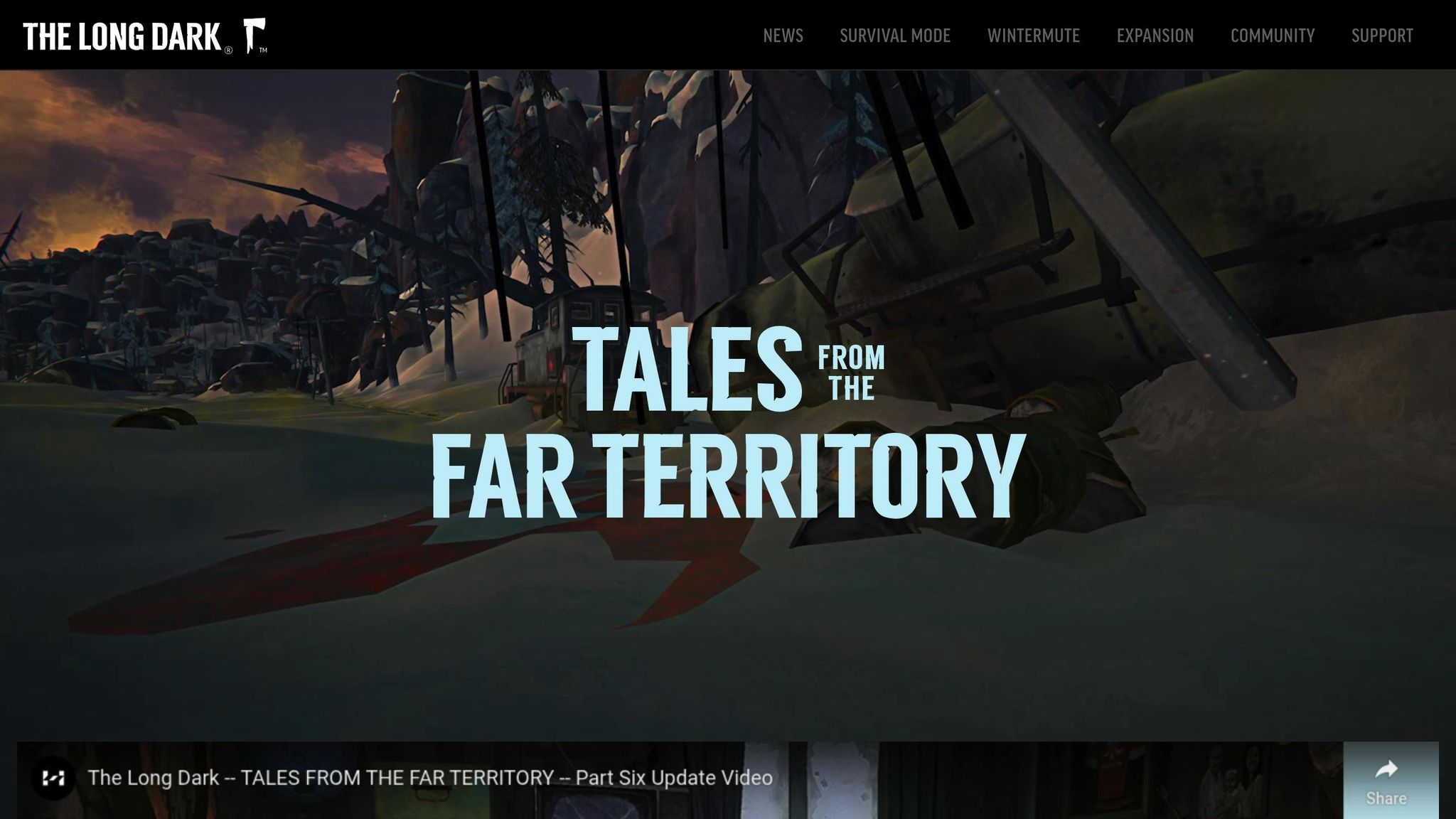
Building on the gritty survival themes of its video game counterpart, The Long Dark brings its chilling wilderness experience to the tabletop. This adaptation strives to recreate the stark, unforgiving atmosphere of surviving in a frozen, desolate landscape. While details about its mechanics are still limited, the game promises to deliver the same tension and sense of isolation that made the original so compelling.
At its core, the tabletop version emphasizes the weight of every decision. Forget heroic quests or fantastical adventures - this game is all about navigating harsh, realistic dilemmas. Players must manage dwindling resources while braving the relentless cold and other environmental threats. Like the video game, the tabletop adaptation centers on survival in extreme conditions, offering an immersive and nerve-wracking experience for those who dare to face the frost.
4. Outward (Tabletop Adaptation)
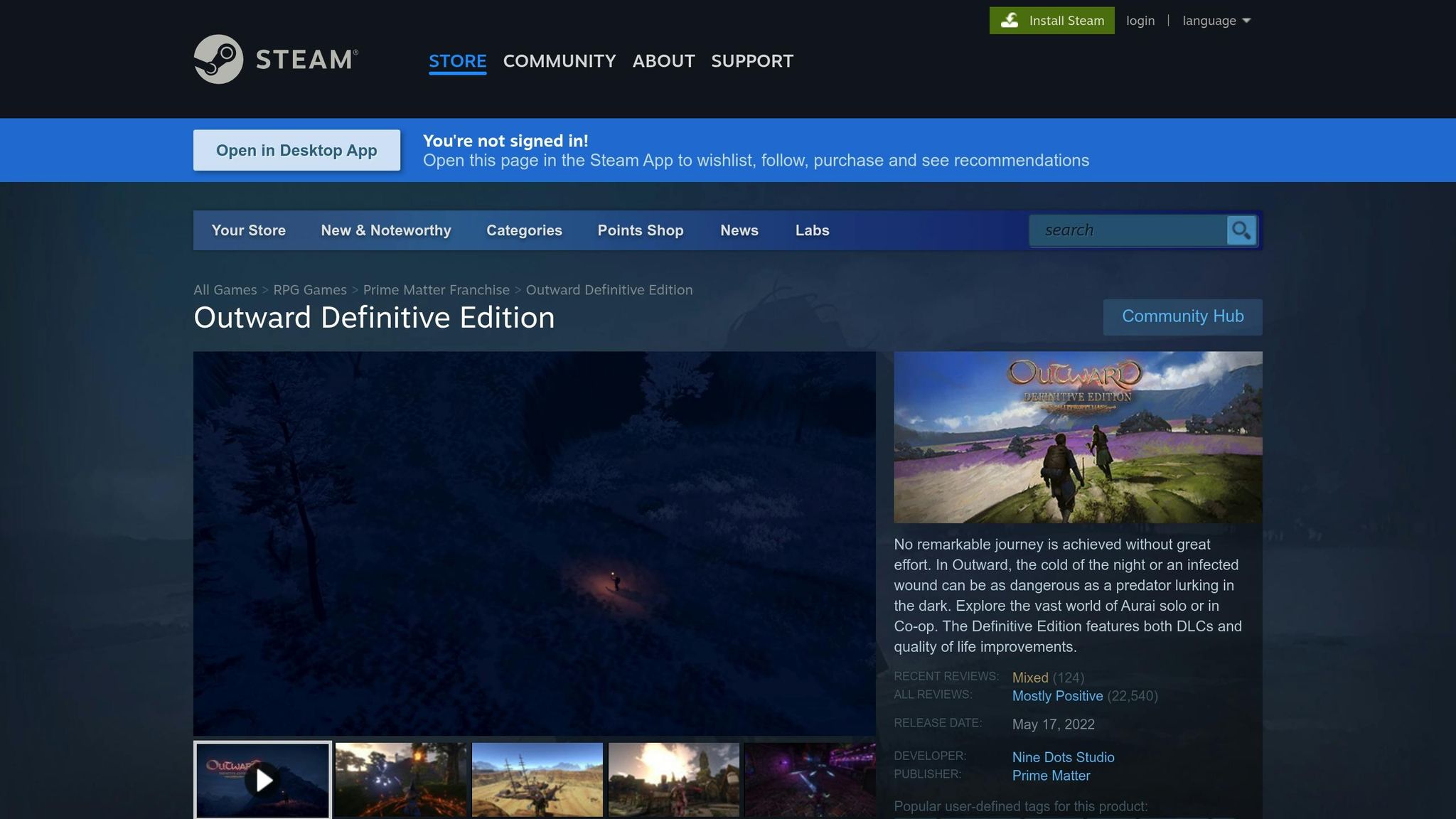
Based on the video game of the same name, Outward brings the grit and challenge of survival to the tabletop. This isn’t your typical fantasy RPG where you start as a hero destined for greatness. Instead, you step into the shoes of regular people trying to make it in a magical world where every mistake can cost you dearly.
Survival Mechanics
The tabletop version of Outward stays true to the video game's survival-first philosophy: you’re not special. You begin as an ordinary survivor, relying on careful planning and resource management to get by. Every decision matters as you navigate threats from both the environment and dangerous creatures.
One standout feature is the backpack system, faithfully adapted for tabletop gameplay. Every item you carry has weight and takes up space, forcing you to prioritize. Pack too much, and your progress slows; leave behind essentials, and you risk disastrous consequences. Choosing between a healing potion or a warm cloak to stave off hypothermia can feel like a life-or-death decision.
Combat is deliberately clunky and risky, reflecting the limitations of ordinary people. There’s no quick healing or magical safety net - injuries stick around, infections can spread, and death is final. Every encounter demands careful thought, and more often than not, running away might be your best option.
Narrative Style
The storytelling in Outward mirrors its tough mechanics, focusing on everyday struggles and small victories. Instead of slaying dragons or saving kingdoms, your party might spend hours scrounging for supplies or bartering with merchants for better gear. The game thrives on interconnected, smaller stories rather than one sweeping epic.
What makes the narrative compelling is how the world reacts to your choices. Consequences don’t always hit immediately - miss a house payment, and it might seem fine at first. But return from a long journey only to find your belongings confiscated, and the emotional weight of those earlier decisions becomes crystal clear. This slow-burn approach makes every choice feel grounded and impactful.
Player Experience
Playing Outward requires a shift in mindset. If you’re used to power fantasies, adjusting to constant vulnerability and slow progress can be challenging. But for those who embrace it, the game turns small achievements into moments of genuine triumph. Crossing a treacherous mountain pass or surviving a brutal winter feels just as rewarding as defeating a boss in other RPGs.
The game also shines in creating moments of shared struggle. Picture your party huddled around a campfire, rationing food while a blizzard howls outside. These moments feel real, and players often grow attached to their gear and safe havens. Losses aren’t just numbers on a sheet - they hit hard, adding emotional depth to the experience.
Accessibility
While Outward offers a rich and immersive experience, it comes with a steep learning curve. Its complexity and unforgiving nature can be daunting for newcomers. Experienced game masters are crucial in guiding players, balancing the game’s challenges with moments of enjoyment. The detailed tracking of inventory and conditions may also overwhelm those who prefer a more streamlined approach.
Thankfully, the game includes modular difficulty options. Game masters can tweak survival mechanics, simplify tracking, or ease the consequences without compromising the core experience. This flexibility makes it easier to introduce Outward to groups who might otherwise find it too intense.
For those willing to invest the time and effort, Outward delivers a tabletop experience filled with unforgettable moments that players will talk about long after the game ends.
sbb-itb-b8b00a5
5. Dread
Dread takes survival horror in tabletop role-playing games (TTRPGs) to a whole new level by ditching dice entirely. Instead, it uses a Jenga tower as its core mechanic, creating a palpable sense of tension that mirrors the psychological strain your characters endure. Every time your character attempts something risky, you pull a block from the tower. And when the tower collapses? That’s the end of the line for your character.
Survival Mechanics
What makes Dread stand out is its simplicity and focus. Forget tracking stats like hunger or thirst - this game boils survival down to one nerve-wracking mechanic: pulling blocks from the tower. Every move that could go wrong requires a pull, and as the tower becomes shakier, the stakes feel higher.
Imagine trying to climb through a shattered window, sneak past a lurking monster, or even just keep your cool in a terrifying moment. Each action means pulling another block, and as the game progresses, the tower’s instability mirrors the growing stress of the situation. Early on, it’s easy to manage. But as the night wears on, every pull feels like it could be the last, and the tension becomes almost unbearable.
This mechanic doesn’t just create tension - it shapes how players approach the game. As the tower teeters, players naturally avoid unnecessary risks, just as real people would in a life-or-death scenario. It’s a perfect blend of gameplay and storytelling, where the mechanics amplify the drama without ever feeling intrusive.
Narrative Style
The tension from the Jenga tower feeds directly into the storytelling, creating a slow-building sense of dread that’s deeply personal. Dread thrives on intimate, character-driven horror rather than action-packed chaos. It works best with small groups of three to five players, which allows for rich character development and meaningful stakes. The scenarios often revolve around ordinary people in extraordinary, terrifying situations - friends lost in the wilderness, plane crash survivors, or scientists isolated in a remote facility.
The pacing of the game is a masterclass in suspense. It starts with scenes that establish normalcy and relationships, slowly introducing the central threat. As the tower becomes more unstable, the story naturally intensifies, driving toward a dramatic climax. This structure makes every decision and character interaction feel weighty, as players know their time is limited.
For the game master, the focus shifts from managing rules to building atmosphere. Without dice to disrupt the flow, conversations and character moments feel more organic and immersive. The ever-present Jenga tower serves as a constant reminder of looming danger, keeping players on edge even during quieter moments. It’s a perfect setup for gritty, emotionally charged campaigns.
Player Experience
Playing Dread is an emotional ride like no other. The simple act of pulling blocks engages players physically, making their hearts race as the tower sways. The tension escalates with each pull, forcing even the most daring players to think twice before taking risks.
What’s fascinating is how the game changes player behavior. Even those who tend to hang back find themselves drawn into the action when the tower starts to wobble. The shared anxiety creates a strong bond among players, as everyone holds their breath during those crucial moments.
Character death in Dread is handled in a way that keeps everyone involved. When the tower falls, that character’s story ends, but the player doesn’t leave the table. Instead, they might take on supporting roles, participate in flashbacks, or help narrate the aftermath. This ensures that everyone stays engaged, even after their character’s demise.
Accessibility
Despite its intensity, Dread is incredibly easy to pick up. The rules are simple enough to explain in just a few minutes, making it an excellent choice for newcomers to TTRPGs. There’s no need for complex character sheets or math-heavy mechanics, which lowers the barrier to entry significantly.
That said, the game does have some unique challenges. The physical act of pulling blocks might be difficult for players with motor issues, though accommodations like tweezers or proxy pulls can help. Additionally, the game’s high-stress atmosphere might not be suitable for everyone, particularly those sensitive to anxiety or tension.
All you need to play is a standard Jenga set, which costs around $10–$15, and a bit of imagination. Setup is quick, cleanup is a breeze, and sessions typically last 2–4 hours, making it ideal for one-shots or short campaigns. However, Dread is best suited for mature players who can handle the emotional weight of the game. It’s not the right fit for younger audiences or anyone looking for a lighthearted experience.
For groups ready to embrace the tension and terror, Dread offers a gaming experience that sticks with you long after the tower falls.
Comparison of Strengths and Weaknesses
Survival TTRPGs bring their own mix of mechanics and storytelling, creating unique and often intense gaming experiences. Here are some key aspects to think about when choosing the right game for your group:
- Mechanical Complexity: Some systems are designed for fast and straightforward gameplay, while others dive deep into intricate survival mechanics. Whether you prefer a quick, action-packed session or a detailed simulation of survival challenges will depend on your group's style.
- Narrative Approach: Storytelling can range from single-session adventures with a strong, self-contained story to sprawling campaigns where characters form bonds and unravel mysteries over time. The choice here often depends on whether your group enjoys short-term thrills or long-term character development.
- Accessibility: How easy is it to learn and set up the game? Simpler systems are great for beginners or casual players, while more complex games may appeal to seasoned players looking for a richer, more involved experience.
- Session Length and Group Dynamics: Some games are built for short, high-intensity sessions, while others are designed for longer, more immersive play. Additionally, the ideal number of players can vary by system, influencing whether the game feels more intimate or expansive.
- Preparation Requirements: The amount of prep work needed before a session can vary widely. Some games require minimal setup, while others demand detailed planning. Picking a system that matches your comfort level with preparation can make running the game much smoother.
These factors can help you decide which survival TTRPG aligns best with your group's preferences and play style.
Final Recommendations
When choosing a survival TTRPG, it all comes down to what your group values most. If sci-fi horror is your jam, then Mothership is a fantastic pick. Its streamlined rules keep the focus on building tension and delivering psychological chills, perfect for players who want an immersive, eerie experience without getting bogged down in complex mechanics.
For those who lean toward narrative-driven tragedy, Ten Candles is a standout. This game thrives on its inevitable doom mechanic, encouraging players to craft emotional, meaningful final moments rather than simply striving to survive. It’s particularly suited for one-shot sessions where storytelling takes center stage.
If you’re introducing new players to survival horror, Dread is an excellent starting point. The Jenga tower mechanic is simple and engaging, eliminating the need for dice or complicated rules. This makes it approachable for non-gamers or anyone who might find traditional RPG systems intimidating. Plus, the physical act of pulling blocks adds a layer of tangible tension that’s hard to beat.
For groups that love detailed survival mechanics and are ready to commit to longer campaigns, the tabletop adaptations of The Long Dark and Outward are worth exploring. These games dive deep into resource management and environmental challenges, rewarding players who enjoy strategic thinking and careful planning. They’re ideal for ongoing campaigns that evolve over time.
FAQs
What should I keep in mind when picking a survival TTRPG for my group?
Choosing the Right Survival TTRPG
Picking the perfect survival tabletop RPG (TTRPG) for your group boils down to a few important factors. Start by considering your group's play style and experience. Some games are straightforward with easy-to-learn mechanics, while others dive deep into complex rules and intricate details. It's crucial to choose a game that matches your group’s preferences and comfort level.
Talk with your players about the type of survival adventure they’re excited about. Do they want to focus on exploring uncharted wilderness, managing scarce resources, or diving into gripping, emotional narratives? Pinpointing these interests will guide you toward a game that delivers the experience they’re craving.
Lastly, take a close look at how the game handles survival mechanics. A well-thought-out system can heighten tension, immerse players in the struggle for survival, and make every decision feel impactful. The right mechanics can turn a good campaign into an unforgettable one.
How does the Jenga tower in Dread create more tension than traditional dice rolls?
The Jenga tower in Dread brings a whole new level of tension to the table by turning risk into something you can physically see and feel. Every time a player pulls a block, the wobbling tower serves as a constant, nerve-wracking reminder of just how high the stakes are. Unlike dice rolls, which rely on abstract probabilities, the tower’s instability makes the danger feel immediate and real.
What’s even more gripping is how the tower mirrors the rising tension in the story. As the structure becomes more precarious, the pressure on players builds, making every choice feel monumental. The act of pulling a block isn’t just a game move - it’s an emotional rollercoaster, drawing players deeper into the survival drama and keeping them on edge in a way few other mechanics can.
What are some tips for introducing new players to survival TTRPGs without overwhelming them?
To help newcomers get comfortable with survival TTRPGs, start with straightforward scenarios that emphasize the core elements of gameplay and storytelling. Keep things simple at first, allowing players to grasp the basics before layering in more advanced mechanics as they build confidence.
Make the game engaging by crafting characters and situations they can connect with. Tailor the story to their interests and use vivid, descriptive language to draw them into the world. Avoid overwhelming them with complex rules or tricky situations early on - this keeps the experience fun and approachable.
Lastly, foster a sense of teamwork and maintain a supportive atmosphere. This encourages new players to dive into the game, explore their options, and make choices without worrying about "messing up."
